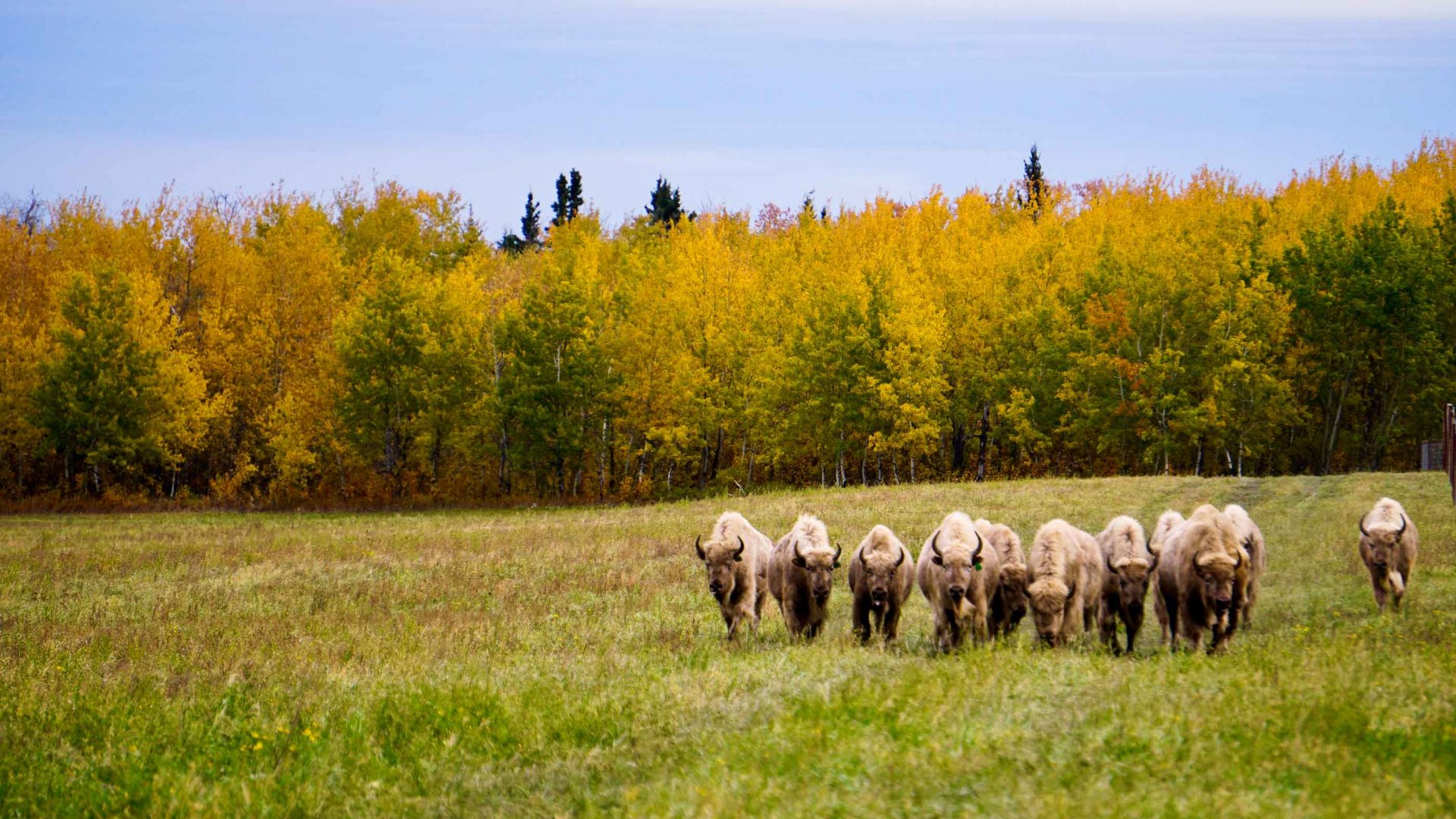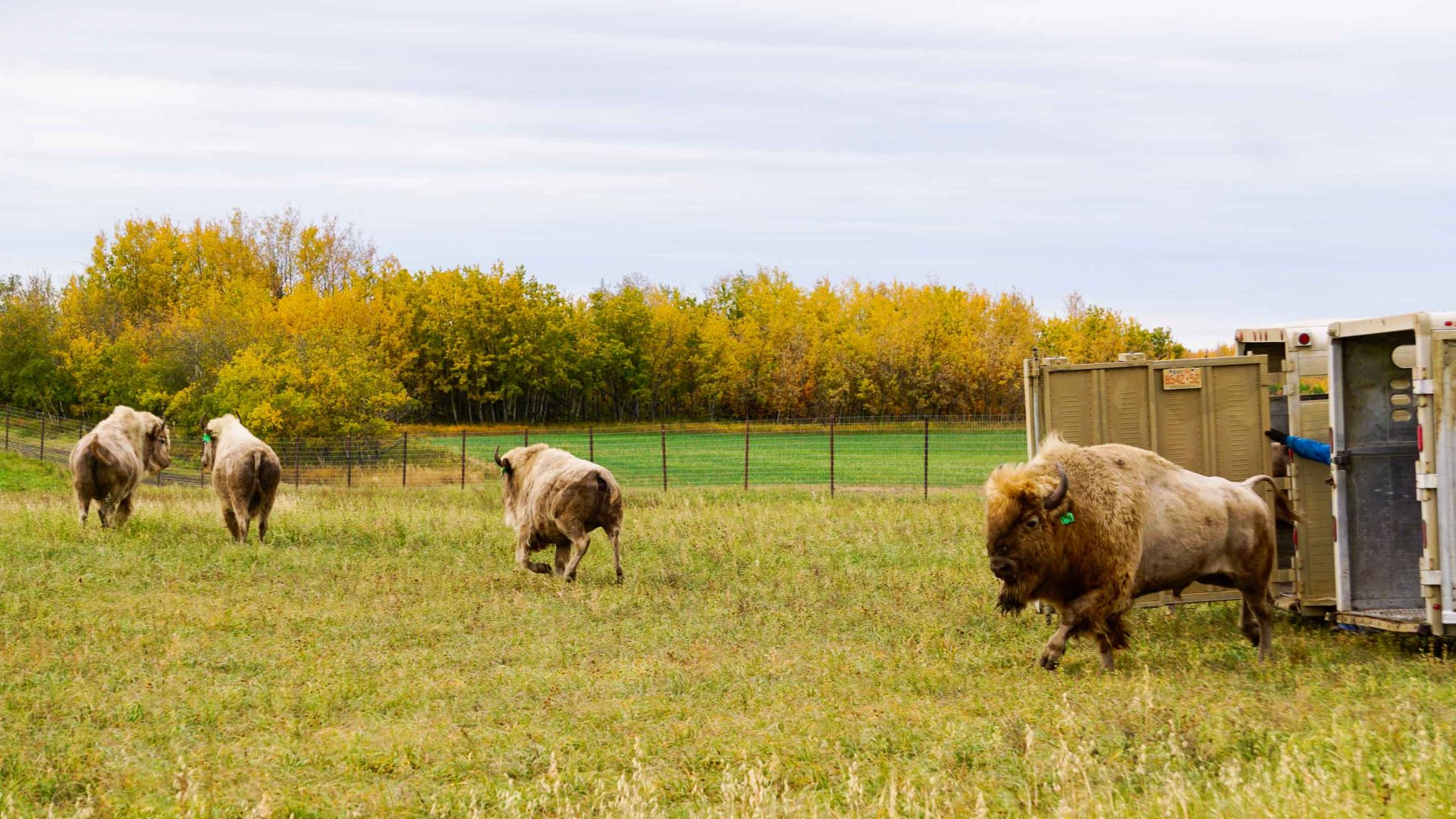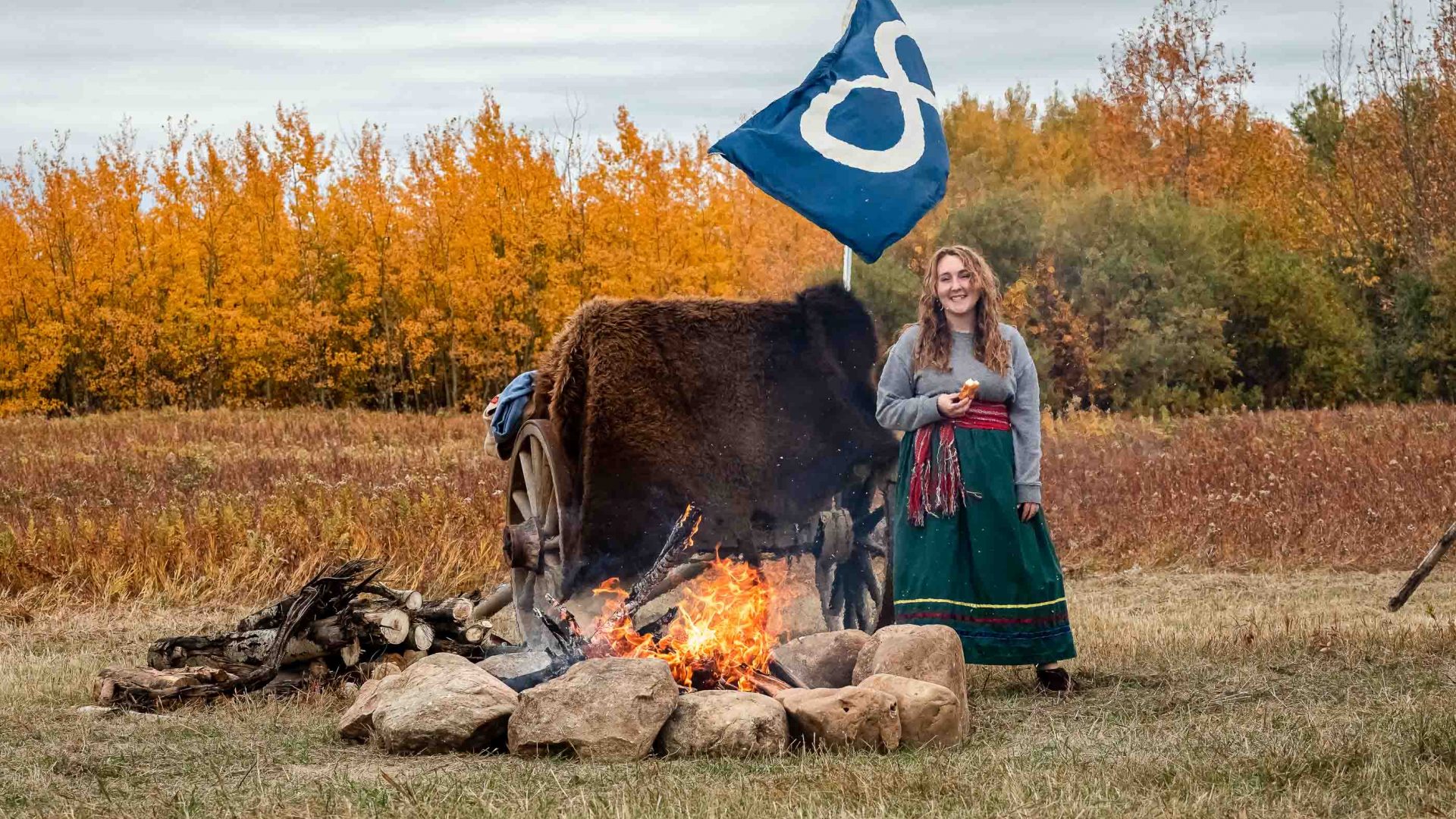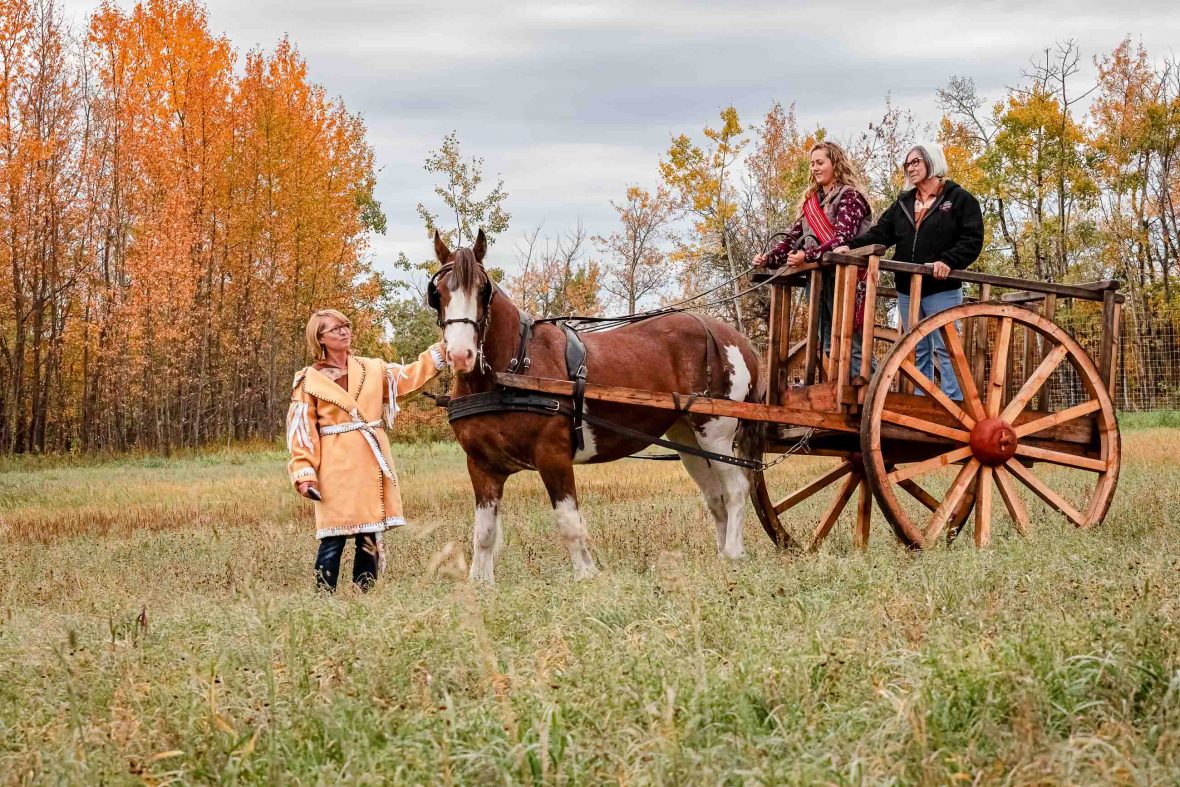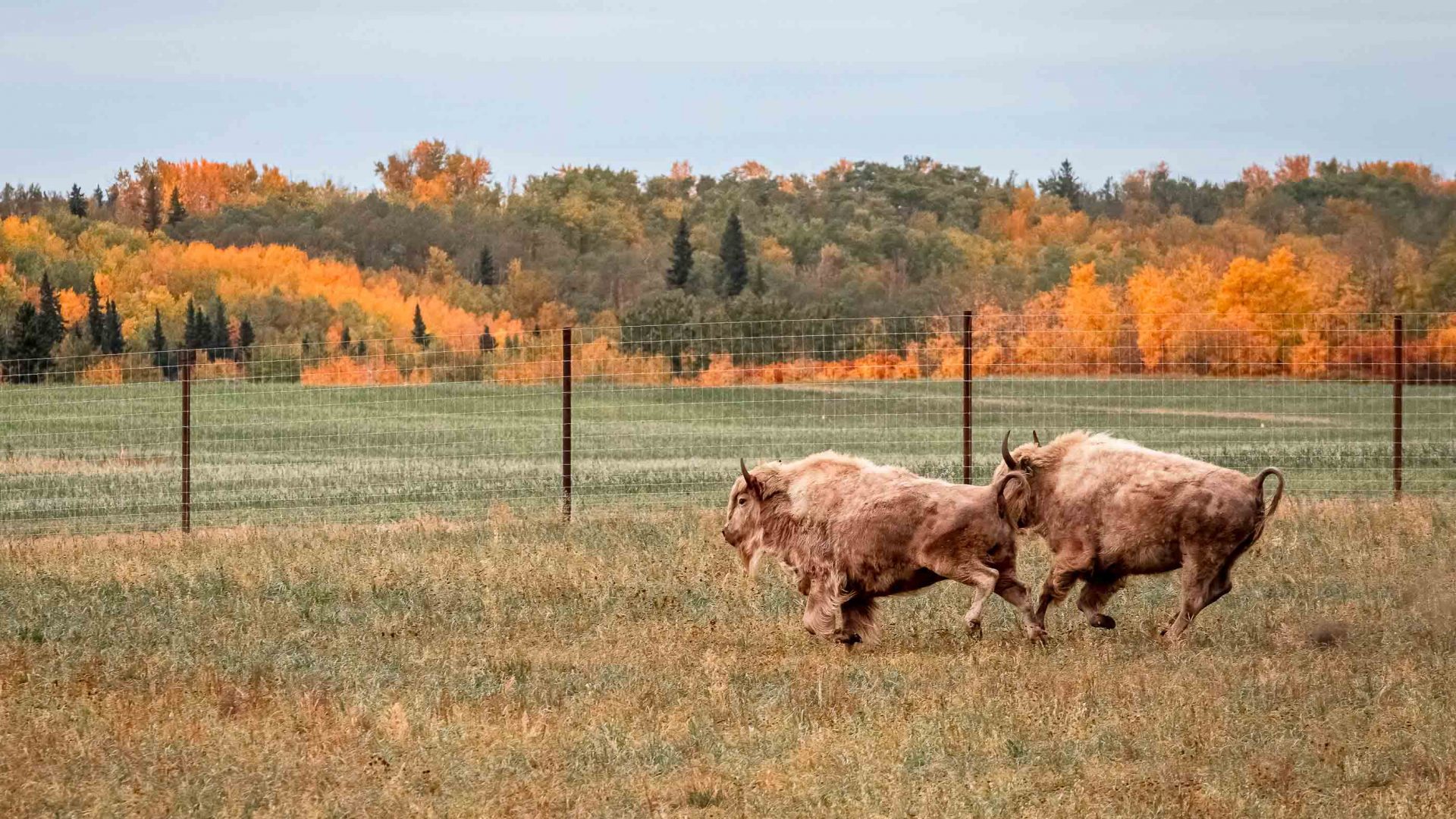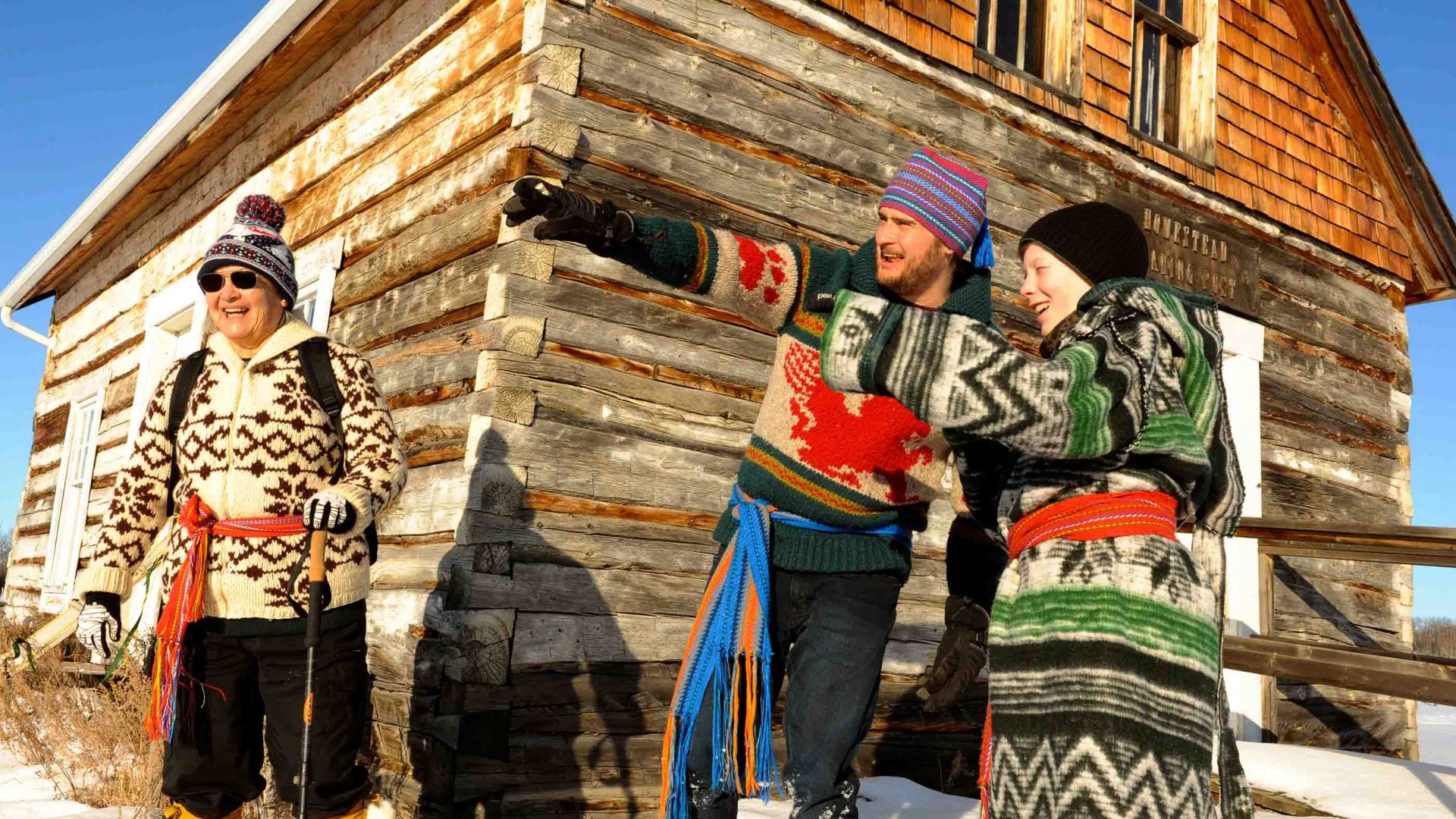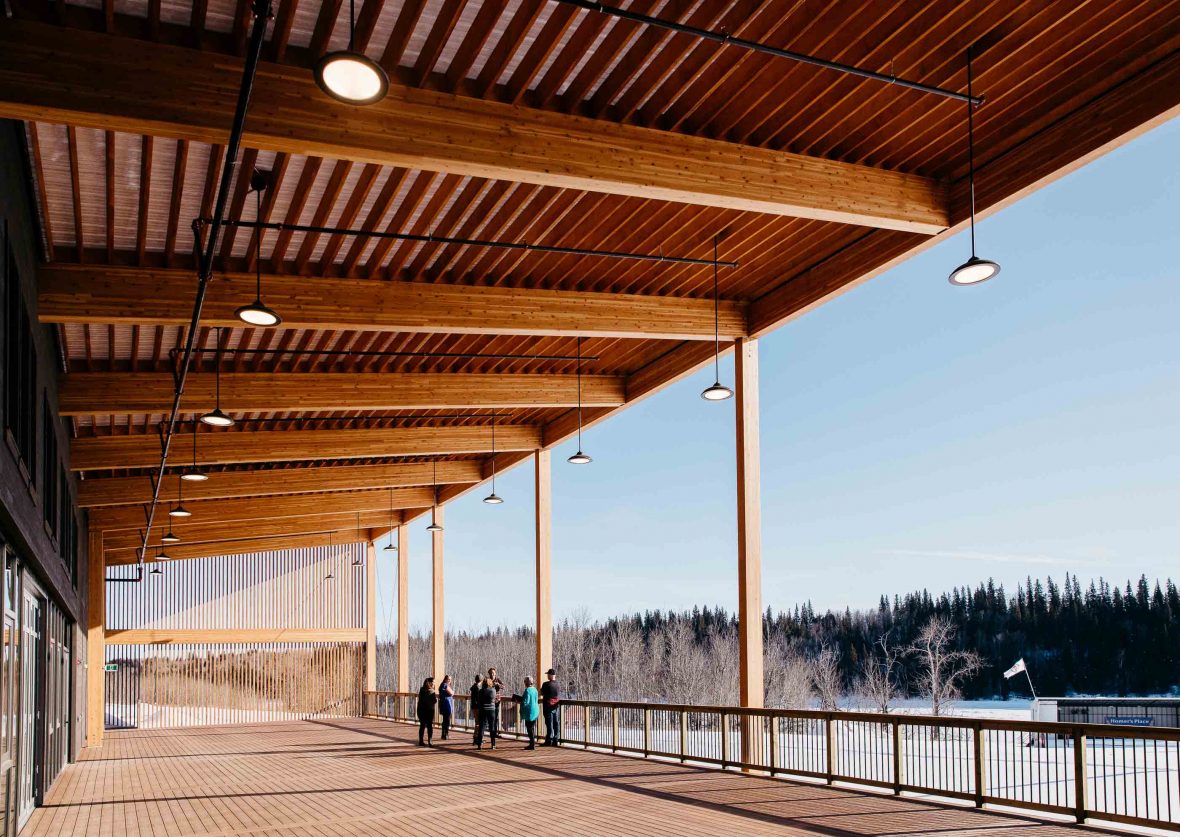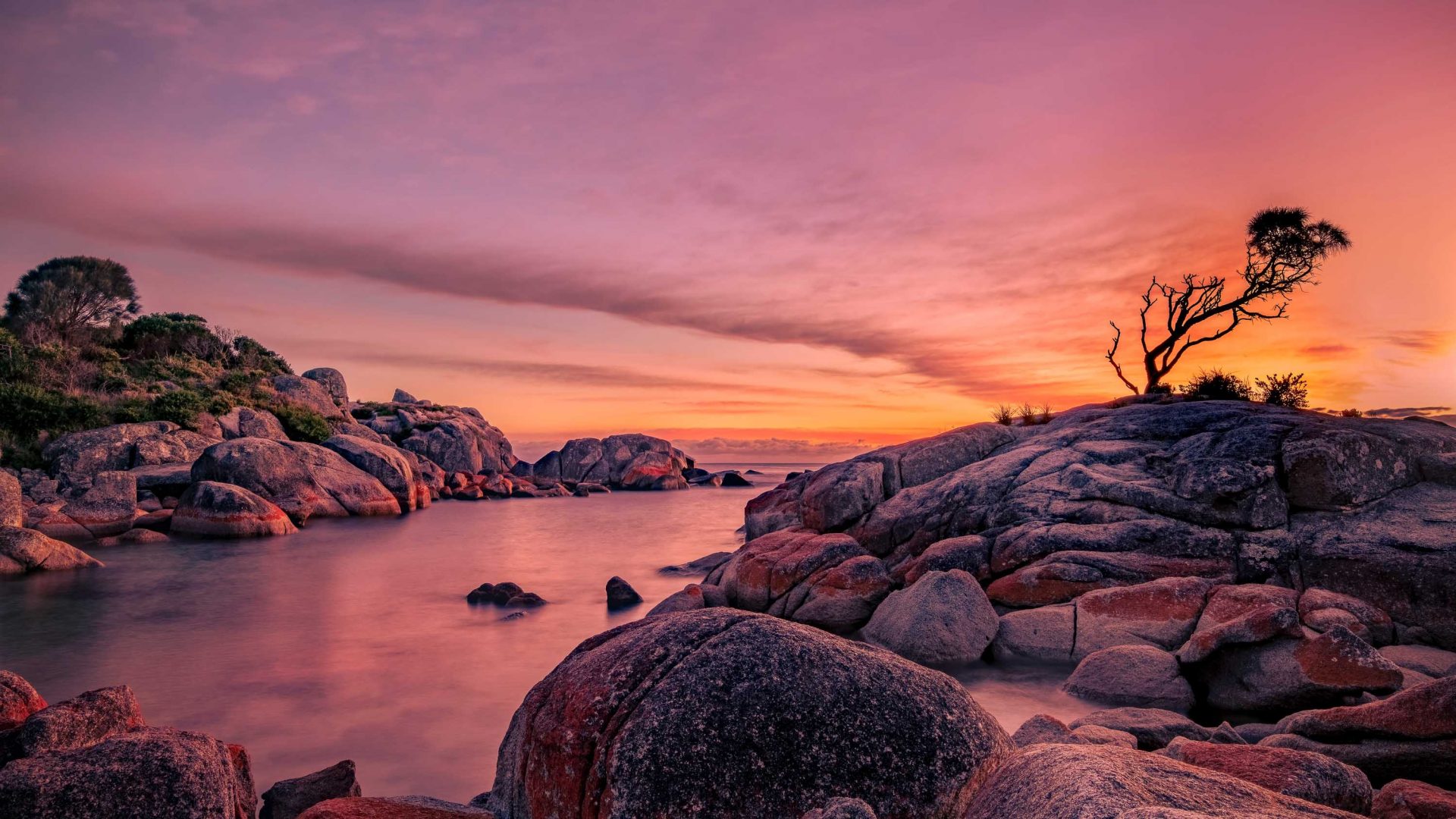Buffalo helped build the Métis Nation until European settlers hunted them to their near-extinction. Today, their reintroduction symbolizes Métis resilience in a country still addressing the wrongs inflicted on its Indigenous people. Karen Gardiner heads to the Canadian province of Alberta to witness a historic moment and see reconciliation in action.
On a crisp September 2021 morning in Alberta, I’m part of a small crowd gathered in a paddock on the banks of the North Saskatchewan River. As we wait quietly behind the length of a wire fence, everyone seems to be holding their breath; eyes fixed in the direction of a livestock trailer parked at the paddock’s edge.
Finally, after a few tense minutes, a rancher, looking the part in a white stetson, gently opens the trailer door and the clattering of hooves rips through the silence.
I watch as, one by one, 16 huge, square-humped wood bison, also known as buffalo, come thundering out, running at full-tilt for a few hundred meters before pulling up and huddling together—as if to discuss where on earth they’ve just found themselves.
If they recognize the place, it must have been a genetic memory. Until this morning, bison hadn’t set hoof on those hills for around 150 years.
Throughout the 19th century, in spring and fall, members of the Métis Nation would gather in the North Saskatchewan River Valley in their thousands to hunt abundant bison—also known as buffalo, or “lii bufloo” in Michif, the language of the Métis.
By the end of the century however, European settlers had hunted those bison to near-extinction. But this morning, the group, largely made up of Métis community leaders and Elders, have gathered to welcome them back to their natural environment.
RELATED: From ‘unwanted’ relics to tourist attractions: Can travelers help save Canada’s only reindeer herd?
Bringing bison back to the Métis homeland was the realization of a dream, says Juanita Marois, who stands watching on the edge of the paddock.
“Buffalo are the foundation of our independence. We learned from them. We governed through them. And that’s how we plan to move forward.” The Métis were once landless, she adds. “Now that we have a piece of land through Métis Crossing, putting the buffalo back on that land is a symbol of our resilience and our strength.”
“The bison are so important to us,” says Marois, speaking to the group afterward at the opening ceremony in Métis Crossing’s newly-built Cultural Gathering Center. “They came to us, first as a source of food and then we built them into the source of our economic activity.”
The Métis used dried buffalo meat to create pemmican and shipped it to fur trading posts in the north. This trade was a major factor in the emergence of a distinct Métis society and, said Marois, “foundational to us as we developed an economic system.”
RELATED: Reconnecting with my Indigenous ancestry, one conversation at a time
Moreover, the rules of the buffalo hunts formed the basis of Métis democratic and judicial systems, which helped to establish the Métis as a Nation. At the beginning of each hunt, there would be an election of a Buffalo Council, which would establish rules or laws that were agreed upon by the entire community, creating one of the earliest forms of direct democracy in North America.
The Laws of the Hunt, I’d read earlier that morning, in The North-West is Our Mother by Jean Teillet, was “an institution built on everything the Métis cherished—freedom, mobility, democracy, the family and the hunt.”
Earlier, in the Cultural Gathering Center, Audrey Poitras, Métis Nation of Alberta President, had expressed a similar sentiment. “We’ve achieved this together,” she said. “Visions, Hopes and Dreams is better that it could ever be with only one of us.”
This inter-cultural collaboration echoes the Indigenous framework of “two-eyed seeing,” which Mi’kmaw Elder Albert Marshall described as “learning to see from one eye with the strengths of Indigenous knowledges and ways of knowing, and from the other eye with the strengths of Western knowledges and ways of knowing, and to use both of these eyes together for the benefit of all.”
I had been introduced to the concept by Joe Urie, owner of Jasper Tour Company, as we drove from Edmonton to Métis Crossing. He told me that, to him, two-eyed seeing “is Métis culture personified. Because we have both of those eyes; we have one foot in either camp.”
The wildlife park is just one part of Métis Crossing’s expansion. It will open a new 40-room lodge this winter and add snowshoeing, stargazing programming, and cross-country ski trails. The center needed these “international-level draws, like the buffalo experience,” in order to meet its goal of achieving financial self-sufficiency, says Marois.
“That’s part of who we are as a Nation. We weren’t given things from other people. We were separated from the Europeans and separated from the First Nations, We created our own Nation, and it’s a sign of our independence and entrepreneurial spirit.”
That self-sufficiency allows us “to bring our own people here,” Marois tells me of the Métis people who visit to connect with their culture and the educational school trips they host from across the province. “Métis Crossing is about our people wanting to share ourselves with others, and also use all of that to continue to rebuild our Nation.”



